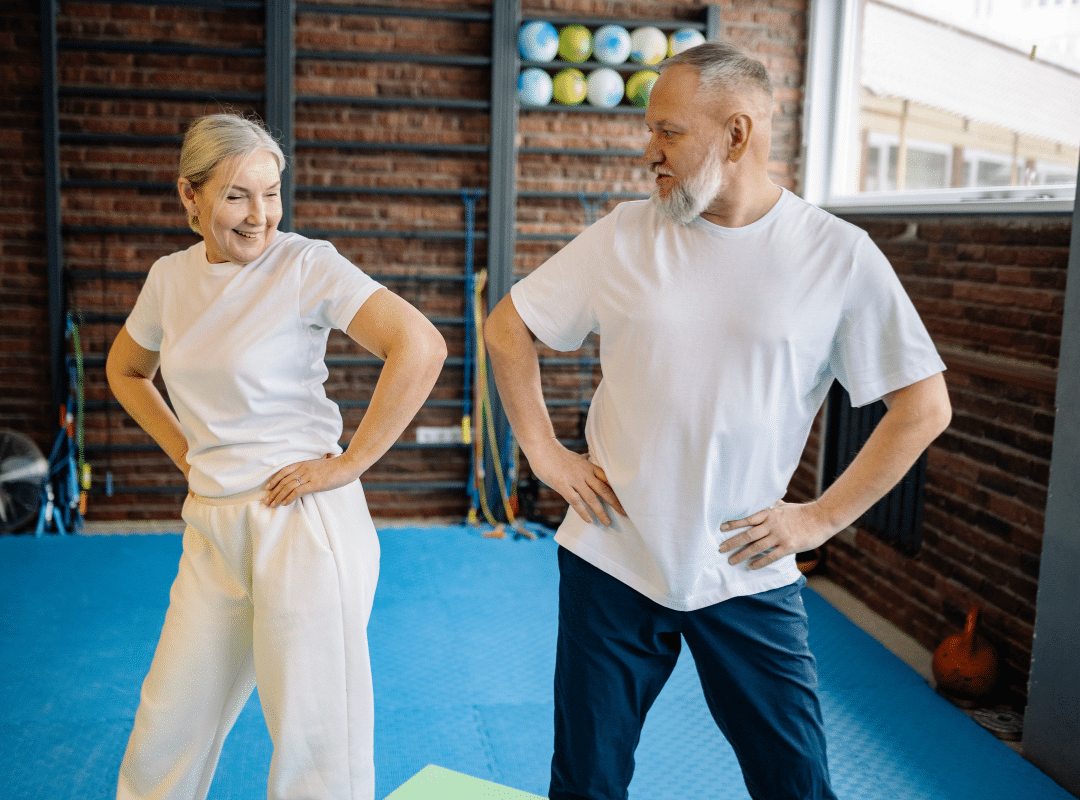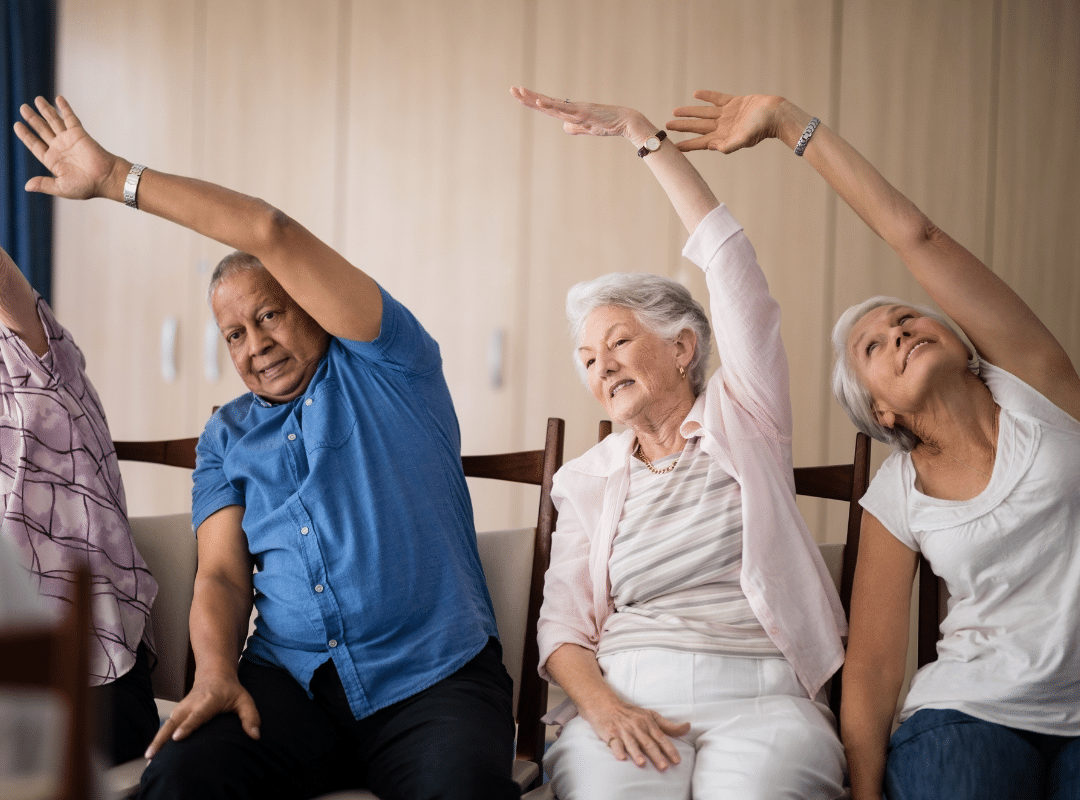Hip Stretches for Seniors to Improve Balance and Strength
As we age, our joints, particularly the hips, naturally become less flexible, making everyday movements more difficult. This decline in mobility not only limits activity but also increases the risk of falls, a leading cause of injury among older adults. Fortunately, incorporating simple hip stretches for seniors into your daily routine can significantly improve balance, reduce discomfort, and enhance overall physical function.
At The Westland House, we recognize the power of preventative care through movement. That’s why we focus on safe, practical exercises that promote strength, flexibility, and stability. Whether you’re new to stretching or living with arthritis, some techniques can meet your needs and help you move confidently every day.
Importance of Hip Mobility for Seniors
Maintaining strong and mobile hips is foundational for senior health and independence. Without flexible hips, daily tasks like walking, sitting, and standing can become increasingly complex and painful. Engaging in hip stretches for seniors at home helps build the necessary strength to support your lower body, while also preventing stiffness and imbalance. These gentle stretches can be done in your living room, requiring little to no equipment.
Stretching regularly improves your range of motion, reduces joint stiffness, and enhances circulation, making it easier to stay active and avoid injury. Many residents also find that pairing stretching with creative art activities contributes to both physical and cognitive stimulation.
Common Causes of Hip Pain
Before starting a stretching routine, it’s helpful to understand the common causes of hip discomfort:
- Bursitis – Inflammation of the fluid-filled sacs that cushion your joints.
- Tendinitis – Overuse of hip tendons that causes irritation or inflammation.
- Muscle or Tendon Strains – Often triggered by sudden movement or repetitive use.
- Arthritis – A common condition that causes joint inflammation and chronic pain.
For seniors experiencing conditions like arthritis, hip stretches can offer relief without putting excess strain on the joints. Targeted movement helps lubricate the joints, reduces stiffness, and eases pain over time. And for those managing more advanced needs, nursing home care may provide professional support to implement mobility exercises safely.
Understanding Bursitis and Tendinitis
When bursa and tendons become inflamed, the result is pain and reduced range of motion. Knowing how to manage these conditions can help maintain comfort and mobility.
Bursa Function and Importance
Bursae are small, jelly-like sacs located around major joints such as the hips and knees. They reduce friction and cushion bones, muscles, and tendons. If a bursa becomes inflamed, movement can be painful and stiff.
- Cushioning – They absorb shock to prevent joint damage.
- Friction Reduction – Bursa allows smoother, pain-free movement.
- Support – They aid in joint stability and balance.
- Prevention – Healthy bursae lower your risk of developing bursitis.
If hip pain affects your mobility, consider researching financial assistance programs to help you access care.
Tendinitis Symptoms and Causes
Tendinitis symptoms often include sharp or aching pain, joint stiffness, and reduced strength. It’s typically caused by repetitive movement or stress to the joint. Seniors with tendinitis can benefit from rest, gentle stretching, and light strengthening routines tailored to reduce inflammation. As with any condition, consult a healthcare provider to create a personalized care plan.
Proper Stretching Techniques and Frequency
To get the most benefit from hip stretches for seniors, technique is key. Follow these tips to ensure safe and effective stretching:
- Warm Up – Light walking or arm circles prepare the body for movement.
- Engage Your Core – Support your back by keeping your abdominal muscles tight.
- Avoid Pain – Stretch until you feel tension, not pain.
- Be Consistent – Daily stretching yields the best results, especially for stiff joints.

Exercises for Hip Flexibility and Strength
Adding a mix of static and dynamic movements to your routine helps target different muscle groups. Try these beginner-friendly stretches and exercises:
- Standing Hip Flexor Stretch – One of the most effective standing hip exercises for seniors. Stand with support, step one leg back, and bend the front knee to stretch the hip flexor.
- Clam Shells – Lie on your side with knees bent and feet together. Lift the top knee while keeping feet touching. Strengthens outer hips.
- Seated Hip Marches – A great seated hip stretch for seniors. Sit upright and alternate lifting each knee toward your chest.
- Straight Leg Raises – Lie flat and lift one leg slowly upward, holding it before lowering it back down.
- Hip Extensions – While standing, extend one leg straight behind you without arching your back.
These moves can be modified based on your flexibility level and provide excellent functional strength for daily movements.
Advanced Hip Stretching Techniques
Once you feel comfortable with beginner movements, advanced stretches can enhance both strength and flexibility.
Strength and Flexibility Benefits
Adding advanced movements to your routine promotes better posture, improved balance, and reduced stiffness. These techniques help you move with more control and confidence, essential for everyday activities.
- Improved Strength
- Enhanced Flexibility
- Better Balance
- Reduced Pain and Stiffness
Pigeon Pose Technique
An excellent hip opener, Pigeon Pose stretches the hip flexors and outer glutes. Begin on all fours, bring one leg forward, and bend it in front of you. Extend the other leg behind you and lean forward gently, holding for 30 seconds.
| Step | Action | Duration |
| Start | On all fours | – |
| Position | One leg forward, the other extended | 30 seconds |
| Breathe | Deep, even breathing | – |
| Repeat | Switch sides | – |
This pose is best attempted on a yoga mat or soft surface to avoid pressure on the knees.
Half Bridges Overview
Half bridges are beneficial for core stability and glute strength. Lie on your back, knees bent. Lift hips by engaging glutes and hold for a few seconds before lowering. Repeat 10–15 times. This move enhances the functionality of the hips and lower back.
Benefits of Hip Stretches for Seniors
Regular stretching enhances mobility, supports balance, and reduces discomfort. These exercises help you avoid future injury and promote a sense of independence.
Key benefits of hip stretches for seniors include:
- Enhanced mobility
- Improved flexibility
- Better balance
- Reduced fall risk
- Pain management
- Greater independence
You’ll feel more confident doing everyday activities, such as walking, climbing stairs, or standing up from a chair.
Stay Strong, Stay Independent
Incorporating hip stretches for seniors into your daily routine helps you maintain independence, manage pain, and move more confidently. Whether you’re doing hip stretches for seniors at home, using seated hip stretches for seniors while watching TV, or performing standing hip exercises for seniors to start your day, the benefits are both immediate and long-term.
At The Westland House, we prioritize wellness through mobility. Our personalized support and engaging programs are designed to help you stay strong and active, regardless of your age or mobility level. If you have arthritis or chronic pain, remember that gentle hip stretches for seniors with arthritis can still bring comfort and restore movement—every step matters. For guidance, feel free to contact us at 734-326-6537.
Frequently Asked Questions
How to release tight hips for the elderly?
To release tight hips in the elderly, gentle stretching and low-impact exercises can be efficient. Activities like seated hip stretches, standing leg swings, and hip circles improve flexibility and blood flow. Incorporating daily movement helps prevent stiffness that can occur from prolonged sitting or inactivity. Always consult a healthcare provider before starting a new exercise routine to ensure it is safe, taking into account your individual health conditions.
How to relieve hip pain in the elderly?
Hip pain relief for the elderly often includes a combination of rest, gentle stretching, and heat or cold therapy. Over-the-counter anti-inflammatory medications may help reduce discomfort, but they should be taken under a doctor’s guidance. Physical therapy is also helpful for building strength and improving joint mobility. Maintaining a healthy weight can reduce stress on the hips and ease pain over time.
What is the biggest cause of hip tightness?
One of the most common causes of hip tightness is prolonged sitting, which can cause the hip flexor muscles to shorten and weaken. Other contributing factors include lack of exercise, poor posture, and aging-related muscle stiffness. Stress and repetitive movements can also lead to muscle tension in the hips. Staying active and incorporating regular stretching into your routine can help prevent and reduce tightness.
How do you stretch your hips to loosen them?
To loosen the hips, try gentle stretches like seated hip openers, butterfly stretches, or lying leg lifts. Holding each stretch for 20–30 seconds and repeating them daily can gradually improve flexibility. Deep breathing during stretches helps relax your muscles and reduces tension. Always move slowly and stop if you feel any sharp pain or discomfort.

